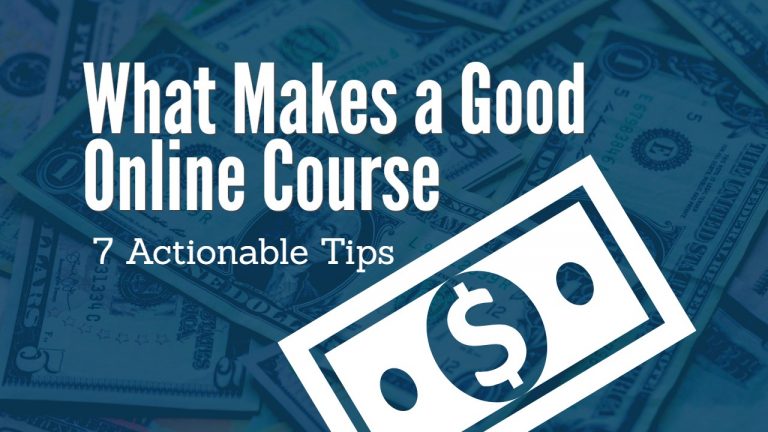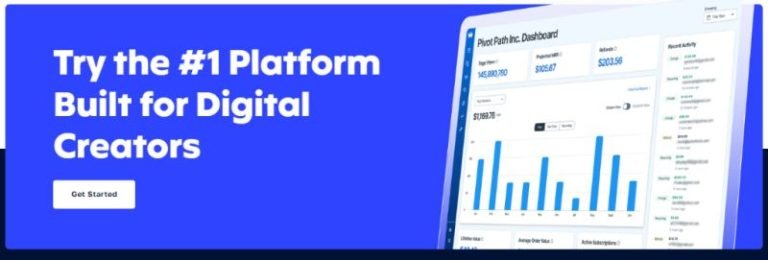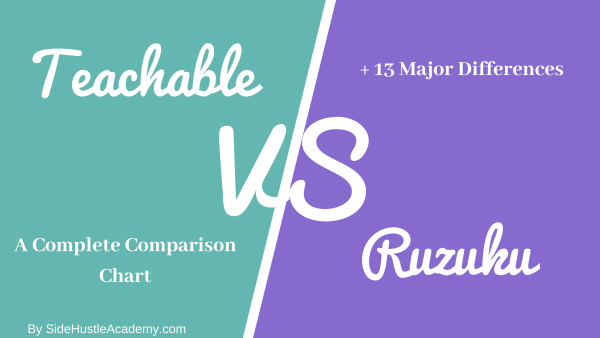How to Price Your Online Course: A Complete Guide
Figuring out how to price your online course can be a daunting task.
Indeed, when it’s time to monetize your knowledge and expertise, many educators’ #1 challenge is…
How to Price Your Online Course.
You have NO clue where to start. But this is what separates the hobbyist from the eLearning entrepreneur. If you don’t know how to set the right price for your course effectively, you’ll never reach this level of success.
Pricing an online course correctly isn’t easy, folks.
Consider one educator who shared with me that as soon as he priced his first eCourse… he realized he had undervalued his content significantly compared to competitors in his niche.
Now he’s hesitant about repricing, fearing backlash from early students or potential customers seeing fluctuating prices. Not only that, but he also worried if he’ll ever achieve sustainable profits through his courses!
No surprise there!
The truth is…
How to PriceYour Online Course Correctly
One crucial factor often overlooked when selling online courses is the pricing strategy. The price tag you put on your course can significantly impact every facet of your online teaching business.
Studies show that potential students associate a higher price with superior quality and vice versa. This perception influences their buying decision directly.
If you set a low price point for your course, you risk devaluing its perceived worth in the eyes of prospective customers. Setting a cost that’s too high may discourage many people from signing up.
Pricing isn’t just about revenue generation; it’s also tied to marketing abilities and attracting dedicated learners who value education as an investment rather than cost expenditure.
Finding That Sweet Spot: Balancing Quality & Affordability
Avoiding extremes while setting prices becomes vital here. You want to balance ensuring fair compensation for yourself without scaring away potential students by appearing too expensive or cheapening your offering by being too affordable.
Your target market plays a significant role in this balancing act – here are a few questions to consider.
- What demographic are they?
- What average income do they have?
Answering these queries can assist in ascertaining how much learners are prepared (and able) to spend on educational opportunities such as yours.
Proper pricing requires careful thought and strategic planning because “the right” price depends heavily on understanding internal factors, such as costs of creating content, and external elements, like customer expectations and competition within the online school space.
This brings us smoothly to our next topic – Understanding why low pricing could be detrimental when trying to sell online courses effectively…
Understanding the Pitfalls of Low Pricing
When pricing your online courses, a low price point may seem attractive. Nonetheless, this tactic carries some potential drawbacks.
Studies have shown that lower prices can attract customers who aren’t as committed or engaged in the learning process. These potential students might not value your course content and are likelier to drop out before completion.
Beyond impacting student commitment levels, selling at a low price limits revenue generation opportunities for you as an instructor.
With each sale generating less income than higher-priced offerings would bring in, reaching financial goals becomes much more complex and slower.
How Low is Too Low?
The question then arises: how do we define ‘low’ when setting our course’s price tag?
While what constitutes “too low” will vary depending on factors such as target market and subject matter, experts suggest, based on average cost data from various online school platforms,
Avoiding rock-bottom pricing isn’t just about maximizing profits; it’s also crucial for attracting joint venture partners interested in promoting high-quality educational resources rather than discounted courses that don’t reflect their brand values well enough.
The Case Against Competing on Price Alone
The temptation to set a low cost may be felt by those who create online courses to attract more learners.
This strategy, however, may not be beneficial.
Competing solely based on price is not advisable for several reasons.
Effort and Value Perception
Selling your online training at a lower cost doesn’t necessarily mean it will sell better than higher-priced courses.
It often takes as much effort – if not more – to market and sell a discounted course as one with a premium price tag.
Avoid Underselling Your Courses
Your hard work deserves appropriate compensation.
When you undersell your courses by setting prices too low, potential students may perceive them as less valuable or inferior quality than pricier options.
You’ve put time into creating the best learning experience possible; don’t let the wrong pricing strategy undermine this.
Maintaining Course Quality Over Quantity
An essential aspect of selling online courses is ensuring high-quality content delivery.
Studies indicate that maintaining consistent quality over quantity aids in attracting dedicated learners willing to pay the total price for their education.
To summarize: While lowering prices may seem like an easy way out, evidence suggests otherwise.
Pricing should reflect both the value your course material provides and respect for your expertise and efforts invested during its creation.
The Benefits of Premium Pricing
Rather than just setting a lofty cost with no real reason, premium pricing involves providing an extraordinary learning experience worth the fee.
Instead, it’s about delivering an exceptional learning experience that warrants such prices.
Justifying Higher Price Points
A higher-priced course often signifies quality in the eyes of potential students.
But how do you justify these price points?
- Focusing on High-Quality Content: Your course content should educate and engage learners. Forbes suggests incorporating interactive elements, like quizzes or discussion boards, which enhance learner engagement while reinforcing key concepts.
- Demonstrating Excellent Support: A responsive support team is crucial when dealing with complex topics or technical issues. This aspect significantly improves student satisfaction rates and validates your premium pricing model.
- Promising Valuable Outcomes: Learners are likelier to invest at a higher price point if they see tangible benefits from completing your course,” Like acquiring new skills or earning professional certifications.
In essence, offering top-notch content, excellent support, and promising valuable outcomes. You’re providing value far beyond what any discounted courses could offer.
Strategic Pricing Considerations
Considering the price for your digital courses necessitates looking at various factors.
Your target market is a significant consideration – who are they, and what can they afford?
It would be best to look at the average cost of similar courses in your niche.
Using Discounts Effectively
When used strategically, discounts can be an effective tool to attract students without lowering the total price of your course.
The key here is not to devalue your content but rather use discounts as incentives or rewards for early sign-ups or loyal customers.
Offering Payment Plans
Making expensive courses more accessible doesn’t necessarily mean reducing their perceived value or average price.
An intelligent strategy could involve offering flexible payment plans that allow potential students to pay over time instead of all upfront.
This method has proven successful in many online training platforms, making it easier for people with different budget constraints to access quality learning experiences.
To summarize this section, pricing isn’t just about setting a number; it’s part art and part science, which involves considering various elements, such as competition’s prices, customer demographics, etc. while ensuring profitability.
Our next section delves deeper into how you should adjust these strategies based on changing circumstances over time.
Adjusting Your Course’s Price Over Time
The pricing strategy for your online course should not be static.
As the market evolves, so too should your price tag.
When To Increase Prices
An effective way to identify when it might be time for a price increase is by closely monitoring student demand and feedback.
These could justify a higher price point if you notice consistently high demand or improvements to the course content or structure.
A successful example of this can be seen in Udemy’s approach; they regularly adjust their prices based on student feedback and sales data.
Beyond raising prices arbitrarily, consider how changes will affect potential students and those already enrolled in your courses.
It may make sense to grandfather existing customers into their current rate while increasing costs only for new enrollees – an approach used successfully by many membership sites such as MasterClass.
This method respects loyal customers while reflecting increased value provided over time with updated materials or additional resources included within newer versions of the course.
In some cases, it may even be beneficial to temporarily reduce prices during economic hardship or other extenuating circumstances that affect people’s capacity for full-price payment.
Raising prices isn’t always easy but remember. What matters most is providing quality learning experiences at fair values reflecting market conditions and ongoing investments to improve each learner’s experience.
FAQs about How to Price Your Online Course
How do you calculate course price?
You factor in your production costs, desired profit margin, market rates for similar courses, and the perceived value of your content.
How profitable is selling online courses?
Selling online courses can be highly lucrative. Your profitability depends on pricing strategy, course quality, marketing efforts, and audience size.
How do I write and sell an online course?
Create a comprehensive outline, and produce high-quality content that delivers value to learners. Then set a competitive price point and use effective marketing strategies to promote it.
How can I market my online course for free?
Leverage social media platforms and SEO tactics for organic traffic, or collaborate with influencers in your niche who could help promote your course without upfront fees.
Final Thoughts On How to Price Your Online Course
Setting the right price for your online course is a game-changer.
It’s not just about figures; it’s likewise about esteem and how individuals view your course.
Avoiding low-price pitfalls can save you from attracting less committed students and limiting your revenue potential.
Competing on price alone isn’t sustainable; online training holds immense value.
Premium pricing has its perks – dedicated learners, better learning experiences, and higher revenues. Justifying these prices involves delivering top-notch content and excellent support to your students.
Your pricing strategy should be flexible – consider discounts and payment plans, but always keep an eye on preserving the perceived value of your course.
If all this seems overwhelming, remember a high price tag is can always come down but a low price tag harder to go up.
Related Articles
Interested in learning more about creating online courses? Here are some related articles to help you out.
- Thinkific Reviews – A Complete In-Depth Video Review
- Teachable Review – A Complete Review
- How to Find Profitable Online Course Ideas [In 3 Actionable Steps]
- How Much Does It Cost to Create an Online Course
- How Long Does It Take to Make an Online Course
- What Makes a Good Online Course – 7 Actionable Tips
- How Long Should My Online Course Be?













